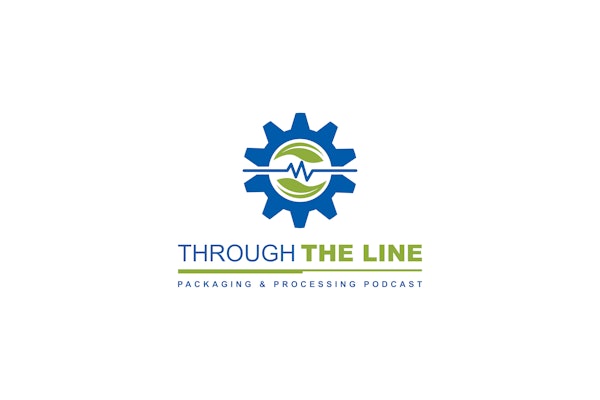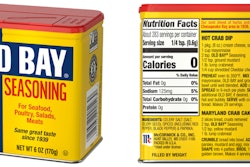The following is a transcription of an Innovation Stage presented Thursday afternoon, November 12, during PACXK EXPO Connects. Watch the discussion here until March 31.
Good afternoon, everyone. My name is Justin Jeans. I'm the digital leader at ITW Hartness. And I appreciate you giving me a little bit of your virtual attention this afternoon. I hope you're all doing well in the midst of these crazy times that we're all going through together. And even though we couldn't be together in person like we normally do this time of year, I'm glad that we still have the chance to connect virtually. Hope you're all having a great time with this virtual PACK EXPO experience, learning a lot of new things. Certainly, it's different than what we're used to, but I think the reason we're all here is essentially the same as it's ever been. We all want to learn how do we do more with less. So many of us in the industry are feeling that pressure now more than ever. That's leading us to put greater trust, than ever, in technology to keep us driving forward.
But what does that mean for manufacturing? We know that doing more with less means greater efficiency, but how exactly can we accomplish this? Once again, we go back to this increasing reliance on technology. We must look to our technological overlords to help us deliver these maximized results that we're seeking, by ruthlessly eliminating that most notorious villain in manufacturing, downtime. If you've been in the industry for half a minute, you've undoubtedly heard these popular buzzwords; Industry 4.0, IIoT, digital transformation. They're all here to save the day. For a lot of us, we're hearing it so often that, maybe, we're growing a little tired of it. As the digital leader of my company, I live and breathe this stuff. It's my passion. I love it. But I can understand where you're coming from. There's no shortage of amazing tools and solutions out there that we're all hearing about so often, but there does seem to be a short supply of clarity, and strategy and focus. People ask, "How are we expected to get so excited about this technology when we don't really understand how to fully unlock its potential?"
At a time when a global pandemic constrains the world, PACK EXPO Connects is bringing the industry together in record numbers this week with over 17,000 attendees as of Wednesday and more registering every day. Over 700 committed exhibitors are driving the event, taking advantage of every aspect of a completely new interactive platform.
Some are really buying into the vision, but they're growing a little skeptical because they haven't yet reached the promised land that these technological advances are supposed to take us to. Before COVID-19 hit, PMMI publicized that global IIoT in user spending would grow from $65 billion in 2018 to $118 billion in 2025. And now that COVID is a major catalyst and accelerating that growth, that number is set to grow even more significantly. But despite that growth, so many companies are still struggling to understand how these technologies get to the core of the day-to-day issues of their business. Many have taken a ready, fire, aim approach to digital transformation, and they're left with the distinct impression that the technology they went all in for wasn't exactly the silver bullet or magic wand that they expected it to be.
My grandmother used to have this old TV. One of those where the TV was this big honking piece of furniture, but the screen itself was a small square with rounded corners. She had rabbit ears sitting on top of this thing so she could watch her soaps and her QVC channel. But her eyes were getting bad, and she got to where she couldn't read the phone numbers on the QVC channel anymore because of the grainy and small screen that she was looking through. This thing was ancient. I'm pretty sure she watched the moon landing on the thing back in the day. So, we decided it was high time. We went in together for Christmas last year and we got her this big, beautiful 60-inch Roku smart TV. And after about a month of getting it all set up for and training her how to use it, as you can see, she now has a pretty sweet setup.
Now, if I could just get her to stop hitting the TV whenever it starts buffering because of her slow internet connection, what are you going to do, right? I'll tell you that to say this. Advanced technology can be the answer to a lot of our problems, but it's only going to carry us as far as we know how to properly utilize it. Despite the impression you may get, no piece of technology is a silver bullet or a magic wand. Sometimes it's more like a scalpel, and only when we skillfully and precisely apply it, can it help us remove that cancerous tumor we call, downtime. At ITW Hartness, we are laser-focused on optimizing performance and lowering the total cost of ownership for our customers. One of the most effective ways that we can accomplish this is by helping our customers to apply technology to eliminate downtime.
We've developed a set of precision tools and skills to help our customers master the science of performance optimization. The first and most crucial step to achieving this goal comes from realizing that all downtime is not created equal. In other words, there are distinct levels of downtime to consider, that impact your line different. To help customers assess and address their unique situations, we've categorized downtime into seven levels and determined how each can be addressed by applying the right technologies to increase the overall line performance. So, for the rest of our time together today, I'd like to explore the seven levels of downtime with you and offer ways that you can maximize the advantages of IIoT, and Industry 4.0 technologies, to precisely address your particular situation. We will break down the different types of downtime based on where the source of that downtime occurs.
The seven levels will be ranked based on two common metrics used for measuring downtime; Mean time between failure, MTBF, which measures the frequency and the downtime events, and Mean time to repair, MTTR, which measures the impact of each event based on how long it takes to recover. In general, the lower level types of downtime will have much shorter mean time between failure and mean time to repair. In other words, these events happen more frequently, but they can be quickly resolved. While the higher-level types of downtime, they'll have much longer mean times for each of those. They don't happen very often, but when they do, it's a big deal. Together, these two measures give us an idea of what the total impact of each type of downtime has on your unique situation…So, let's take a look at the different types and walk through what you should consider when examining each level.
The first type of downtime is level zero. We referred to this as stop and go downtime. This occurs when a machine pauses because it starved or backed up. In PackML, we call this the suspended state. The machine automatically recovers on its own when the external issues are resolved. And since the operator doesn't have to do anything here, this level is often overlooked. But a lot of times, these states can be a catalyst for other downtime events. Think about buying a used car. If you buy a used car that already has a 100,000 miles on it, don't you find it useful to know if those are highway or city miles? Some cars don't perform optimally in stop and go traffic. Actually, none do. And the same can be said for machines. Stop and go traffic can create a lot of additional wear on the equipment. And there's a higher chance of creating additional downtime events when machines go back to the [inaudible 00:07:34].
Traditionally, we want to mitigate these risks by tuning machines …and adding …dynamic accumulations such as our DYNAC models, adding them to the line can be very effective, but a DYNACK is simply going to reduce the impact of the symptoms. It does not address the root issues. That's why technology becomes such an important tool. The right technology can help us determine the root causes. For example, implementing good data collection and analysis, it can really help you understand what part of the line is causing the most downtime to your filler, and where to focus continuous improvement initiatives, in order to keep the line running in a smooth flow.
The next type of downtime, level one, is specific to micro-stops. On a surface, micro-stops usually seem related to cleaning, materials, or other simple anomalies. And they might resemble a jam or down bottles. Typically, an operator can fix these pretty quickly with little effort or training. With good line design and accumulation, these stops should rarely impact the filler directly. However, they can still be a significant drain on resources, and consequently on line performance. Over time, these small issues become much bigger issues. We've all heard the old adage, if you want to boil a frog, you just crank up the heat slowly over time and he'll be cooked before he knows it. Similarly, if your operators are just adapting to playing whack-a-mole with these types of issues, but never addressing the underlying causes, these issues will get worse over time.
Getting the machine up and running again, only addresses the symptoms, not the disease. We can reduce the impact of these events with DYNAC accumulation and we absolutely should. Micro-stops are going to happen for sure, but good root cause analysis can alleviate a lot of the grind involved in keeping the line…. Having good tools to eliminate this type of downtime, such as video logging. We have a tool that we call retrospect and allows us to directly have visibility into the events causing micro-stops. By recording and documenting video at key points of the equipment, we can more easily detect the root cause of a micro-stop, allowing us to resolve the actual issue and not just get the line back up and running quickly, but to ensure that we fix the root problem and we don't continue to fight the same battles over and over again.
We refer to level two downtime as operator intervention. In these events, an operator must make an informed decision and take action to get the machine back up and running. This will include more complex events, such as fault recovery, change over, other standard operating procedures. Having operators who are well-trained and skilled in these tasks is essential to reducing these types of downtime. But that becomes an added challenge for plans with high operator turnover rates. A lot of folks are really struggling with this these days. We can help reduce the dependence on highly trained operators by improving the interface they have with the machines. To achieve this, good interface design and a real-time operator guidance are crucial. Our team has developed a tool called … which essentially digitalizes the on-the-job training process and assists the operators with just the information they need to perform the task at hand, right when they need it, in an easy to digest way.
We're able to achieve this through animations and videos that walk operators through complex tasks, step-by-step, so that even the greenest operators can do their jobs quickly and accurately. Additionally, we can provide remote live training to help further enhance an operator's understanding of the equipment. We've also found it effective to provide operators with data-based feedback from their respective lines and equipment, to help drive higher employee initiative and overall line performance. Operators are our most valued partners. We never want to use technology to just splice them, or as a stick to prod them along with, rather, we want to equip and assist our operators to alleviate or eliminate some of their biggest pain points. We can accomplish this by providing real-time operator guidance, automating portions of the changeover process. We're just giving them data-based feedback.
Operators can become some of the most valuable assets we have available in performance optimization. We consider level three downtime as set up downtime. This type of downtime occurs when a machine is being tuned or configured to run a particular product. When a new product is introduced to a line, the equipment is typically set up and centerlined to run that product most effectively. But inevitably, over time, different users, who all mean well, will tweak the setup to make it better, until eventually, the machine stops running properly. When machines start having problems, it usually infers a change in the physical inputs, such as material tolerances, improper changeover, or machine ware, but instead of doing a thorough root cause analysis, operators and technicians will often try to fix the problem through the setup, in order to get a short term fix. And things get out of control though, as they inevitably do, this leads to a very slow ramp-up process after every changeover. And as they do more and more changeovers, the problem just gets worse.
Traditionally, we've used passwords, center lining documentation, or manual note-taking to solve these problems. But these solutions often prove ineffective over time, due to human nature. In these cases, technology can help by automatically tracking changes. For example, through our configuration manager tool, we're able to keep a revision-controlled history of all the setup changes, making it easy to compare a setup revision to machine performance, and easily roll back to the golden set of parameters. Of course, this tool alone only addresses the symptoms of the problem. Again, we must equip ourselves with the right toolsets such as data tracking, video logging, and troubleshooting guidance, to get to the root cause of a machine's failed performance. Once we do that, we often won't need to change the machine so frequently.
Level four is called maintenance downtime, and it includes both preventative and reactive maintenance. While it's essential to plan appropriate downtime for preventative maintenance, sometimes that task can become a bit more aspirational, as maintenance staffs carry heavy workloads. They're stretched in trying to keep each piece of equipment healthy with ever-increasing production domains. Good CMMS software is extremely helpful with managing your maintenance efforts. The implementation is a huge hurdle in itself. In our company, we help customers digitalize the PM schedule, and keep track of maintenance and their tasks due dates, to offer alerts and guidance to help make sure that PM's are done efficiently and on time. But even the best preventive maintenance regimen can still miss some of the critical and pending failures. Technology allows us to close the feedback loop in maintenance, and catch early warning signs of critical component failure that might have otherwise been missed through preventive maintenance alone. This is what we call predictive maintenance.
The journey to predictive maintenance is a huge undertaking. Let no one fool you. It shouldn't be underestimated, but there's some data analytic techniques such as condition-based monitoring, we can more quickly get some major wins and shift that balance from reactive to proactive maintenance. Some parts will wear and must be replaced. Condition-based monitoring helps us catch these early so that we can fix the problem before it becomes an unplanned downtime issue. Additionally, good OEM partners can help remove the friction in replacing parts through e-commerce platforms for online parts ordering, or post-warranty, machine maintenance, and service packages, that proactively monitor and audit the equipment and help you keep the appropriate amount of spare parts on hand, for back-up.
We refer to level five downtime as engineering downtime. These are the bigger events that require skilled experts to improve or fix the electrical, mechanical, or controls engineering design of the equipment. Often, new requirements are introduced after the initial design is in place. Perhaps there are constraints or challenges that were not considered upfront. Good OEMs and integrators are partners throughout the lifecycle of the equipment. They're to help you get the most out of the equipment. If you're relying solely on phone, email, and in-person visits to get the engineering assistance you need, you could be experiencing a lot of costly downtime. And you could be missing valuable opportunities for performance optimization. If this pandemic has taught us anything, it's that remote connectivity is not only possible but essential.
Through successful remote support, OEMs and integrators can not only help put the pieces back together when the stuff hits the fan, but they can also proactively monitor the line and offer support and consultation. I think we all understand the value of remote connectivity. It's easy to say, but if you've ever tried to implement it, I think you'll also agree, it's easier said than done. Establishing remote access that is secure and effective for all parties, is a monumental challenge. And there are few who are well equipped and stepping up to create a holistic and more viable approach for everyone in the industry. Doing so requires flexibility, agility, and trust. An OEM or integrator has to meet the customer where they are. At ITW Hartness, we've worked with several of our customers to serve them remotely through the means that they have set up. If they've got their own infrastructure, their DMZ, their VPN servers, we're happy to work with them to help them through those mains.
But for those who don't have the resources or the strategy in place to provide us with that connection, we've partnered with third-party experts to develop a tested and secured solution that works well for them. It still kind of the Wild West out there whenever it comes to remote access, but it's getting better. We're getting there. For example, Omak just started a workgroup, in which we're involved, to help develop best practices and recommendations for remote access, to help everyone in the industry do this better. We're making great progress and we're going to continue to get better. But establishing connection is only part of the equation, giving the remote expert and the tools and access to be most effective over remote support, is the often overlooked part in making the solution viable.
This is when tools like wearable video conferencing devices or smart goggles or other video cameras and logging, that can be a huge help to help an expert remotely assess the situation and fix problems that traditionally would have required a service trip. Level six downtime, we call, critical failures. Hopefully, these happen very few and far between, but when they do, they come at a huge cost. When critical components of a machine fail and render the machine inoperable, it's an emergency. And it requires pulling out all the stops. With good preventative and predictive maintenance, of course, we can reduce the frequency and the likelihood of these events, but they can still happen. And when they do, they must be dealt with decisively. The most important part of effectively and rapidly resolving these issues is understanding exactly what happened that will help us to know what's needed to recover.
Traditionally, when we put an expert on a plane and get them there as quickly as possible, it's still slow. And in some cases these days, it may not even be possible. Once the expert arrives, she may find that she doesn't have all of the parts that she needs for the repair. Which means, It can take even longer to go to the machine and the line back up and running. With technology, we can put some of the tools that we've mentioned earlier, in place for post-mortem and root cause analysis. And often, we can triage the issue remotely, and more effectively resolve the issue even when boots on the ground are required. So, these are the major seven categories for downtime, that we consider when we're looking for ways to optimize performance. How do we do more with less? That's the question at hand here. Of course, we can't cover all the nuances in this short time that we have together, but hopefully, this was a good introduction and it calls you to think a little bit differently, about how you address downtime and use technology in your specific situation.
It takes great focus and great partnerships and great tools to eliminate all these different sources of downtime. There is no one size fits all solution. And no solution would be effective without purposeful implementation. Hopefully, this overview gives you some tools to help you carefully assess your situation, choose the right partners, and skillfully apply the right technologies to make a real and lasting impact on your downtime. Technology is an amazing tool, and digital transformation is an amazing journey. With the right strategy and focus, it's possible to do more than we've previously imagined, even under the unimaginable circumstances and constraints that we're all facing together today. Thank you so much for your time and your attention. Please reach out to us at ITW Harness if you have any questions, or if you'd like to learn more and discuss further, thank you.



























